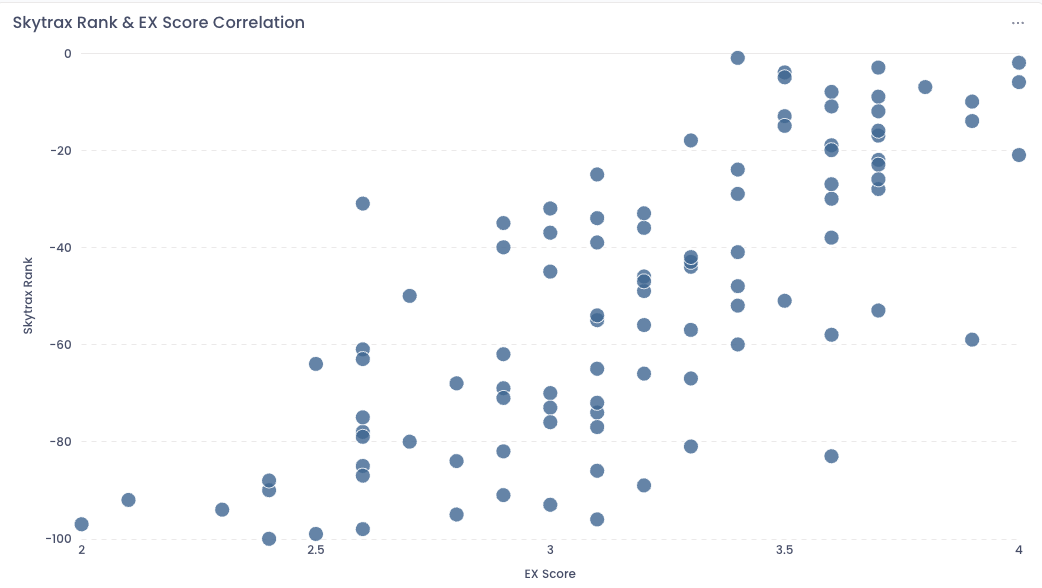The Hidden Engine of Airline Performance: Employee Experience
When airlines cut costs, employee expenses are often the first to go. On paper, that looks efficient: fewer salaries, fewer benefits, fewer costs. However, in reality, those “savings” can turn into million-dollar losses.
When British Airways cabin crew went on strike, the airline lost £45 million in a week. At Air Canada, 99% of flight attendants rejected a wage deal that didn’t cover the cost of living. Lufthansa faced similar unrest when pilots voted for industrial action over pensions.
Yet, these aren’t just labour disputes. Instead, they reveal deeper problems around people feeling unheard and overworked. Every time an airline clashes with its staff, it risks more than lost revenue. It risks its reputation. And in aviation, trust takes years to build but only one strike to lose.
What Passengers See Reflects What Employees Feel
Employee experience (EX) is the hidden engine of airline performance. It directly shapes both operational outcomes and customer perception. When engagement drops, delays rise, workloads grow, and service quality suffers. Passengers notice, and in an industry built on reliability, that quickly erodes trust and bookings.
To understand this connection, it helps to look at the data.
Each year, Skytrax, the organisation behind the World Airline Awards, ranks global airlines based on passenger surveys covering cabin cleanliness, staff friendliness, comfort, and overall satisfaction. These rankings reflect what travellers see from the outside. But they also mirror what’s happening inside: how employees feel about their culture, leadership, and sense of purpose.
At Welliba, we used our EXcelerate platform to analyse Skytrax data for the Top 100 airlines in 2024. EXcelerate is an AI-powered solution that transforms publicly available, unstructured data, such as employee reviews and workplace discussions, into actionable insights. By combining advanced artificial intelligence with robust psychometric science, EXcelerate maps this data to Welliba’s EX Model to reveal what truly drives engagement and wellbeing. Because it draws on passive data rather than continuous employee input, it offers a scalable and ongoing way to monitor, understand, and improve Employee Experience, turning hidden signals into strategic, data-driven action.
The findings were clear: what passengers think about an airline closely reflects what employees experience day-to-day. Our analysis found a strong correlation (0.76) between employee experience and airline performance, meaning they rise and fall together. In other words, how employees feel about their work, leadership, and purpose strongly predicts how passengers rate their journey. Airlines with stronger Employee Experience scores consistently perform better across both operational and customer-facing metrics.
And in such a volatile field, this connection matters more than ever. Over 60% of airlines in the Top 100 shifted by three or more places between 2023 and 2024. In such tight competition, even small improvements in Employee Experience can be the difference between standing still and climbing several ranks.
Inside the Top Performers
Take Qatar Airways, a consistent Skytrax leader. The airline sets high expectations but balances them with strong benefits, fair treatment, and clear career paths. Employees often highlight supportive colleagues and encouragement from management in online reviews. One employee described the management as “encouraging” and praised the “interesting work culture” that operates “without discrimination.” Together, these factors reflect a strong sense of purpose, brand pride, and recognition.
This balance shows up in the data: Qatar’s high EXcelerate scores in Brand & Reputation, Rewards, Purpose, and Company Mission align closely with its #1 ranking in the 2024 Skytrax World Airline Awards.

By contrast, lower-ranked airlines often tell the opposite story: staff cite understaffing, overtime, and poor communication. These are signs of a weak culture and misalignment between leadership and frontline realities. The result? Operational inefficiency, customer frustration, and reputational decline.
Beyond Airlines: Shared Lessons for Airports
The same applies across aviation. As we highlighted in our recent blog post on airport performance, EX drivers like brand reputation, purpose, customer focus, and peer relationships consistently set top performers apart.
For example, Singapore Airlines and Changi Airport both scored highly on brand pride and purpose, showing how employee connection to mission strengthens customer perception. Additionally, All Nippon Airways and Tokyo Haneda Airport exemplify how teamwork and peer support fuel operational excellence and service consistency.
Across the sector, the message is clear: when people feel connected and supported, performance follows.
The Bottom Line
Employee experience shapes everything, from safety checks to smiles in the cabin. Airlines that invest in engagement and wellbeing build stronger brands, reduce disruption, and deliver more consistent service.
Consider Qantas: after a difficult period, the airline made major investments in frontline training, process redesign, and staff engagement. Within a single Skytrax cycle, it jumped from #24 to #14, a clear example that well-targeted EX initiatives can lead to real gains in passenger perception.
At Welliba, our EXcelerate platform helps organisations identify which factors, from purpose to peer support, make the biggest difference. In aviation, Employee Experience isn’t a side project or an HR initiative.
It’s the operating system.
References: Skytrax, The Guardian, Reuters, CNA, The Guardian
To explore the full findings, you can read our complete study here.









